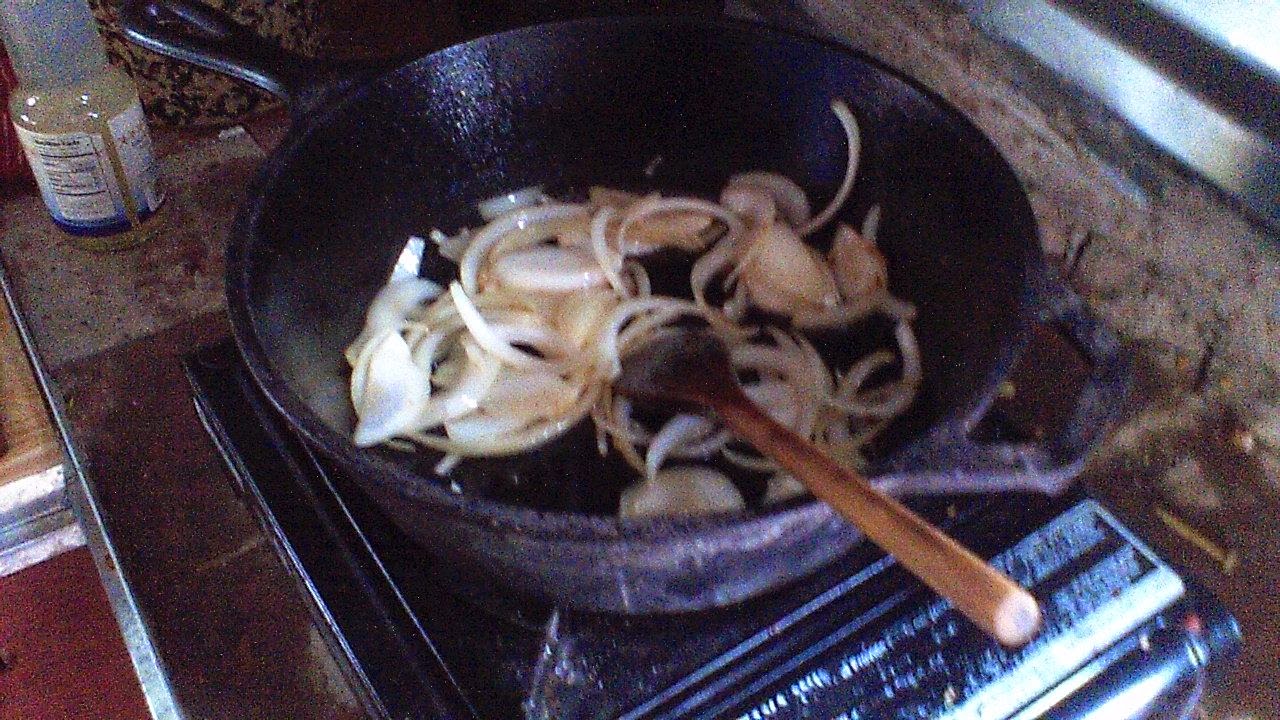CLAM CHOWDER
So in my last post i left you with an admonition about hidden salt only to fall into that selfsame trap while making dinner…. mea culpa. I made the mistake of not checking the nutrition label on two products that i had never used that went into last nights chowder. I mean yes, of course i had used both clam juice and bacon, but not these particular ones and as we should all know not all brands are created equal. Corporations spend oodles of dollars to convince of just this fact. ahemmmm…. It gets worse, not only did i not check out the product but i seasoned before i tasted, yup, all around i would call that a strike out. Luckily i did not ruin the chowder with an overabundance of salt, far from it, however there was too much salt.
I mentioned in the transitions post that Geresbecks does the eating public a real favor by packaging their cheese and meat ends from the deli, they also package slab bacon the same way. Incredibly good food products at very good prices. Not to mention the added benefit of not waiting at the deli counter which is always crowded!
So, some great slab bacon to start your chowder with - dice up a chunk and fry it until it starts to color and crisp.
Remove the bacon, drain and set aside. I always take my bacon out at this point because i want it to retain its crispy crunchy nature, if you leave it it the chowder it will lose the crunch. Next sauté some chopped or slivered onion, about half of a “medium” one, add slice mushrooms, i usually use four medium large white ones, portabellas would be fine as well, sauté the mushrooms until they start to release liquid, add a couple of diced cloves of garlic, a large red-skinned potato and chopped celery. After all the veggies look well coated with oil and are starting to cook add some dry white wine, clam juice(or chicken stock), season with thyme, paprika and coarse ground black pepper. You should have enough liquid to slightly more than cover your veggies. Simmer until the veggies are crisp tender.
Before adding the clams you should soak them in fresh cold water for about a half hour. This will allow them to release most of the grit they have in their tummies and let you see if any of them are unusable, if they will not close you can not use them!
Pop them on top of the simmering veggies, cover them, preferably with a glass lid so you can see whats going on, and watch them carefully.
You do want to pull them off the heat as they open. Place the cooked clams on a plate or in a shallow bowl and allow them to cool enough so you can handle them.
Make sure that your stew is at a low simmer at this point. You will want to add approximately a cup of milk, your choice, cream, half and half or whatever. I usually use the 2 percent which we use for cereal. This is a very rich dish as it is, it really does not need the extra richness from the cream or half and half, but like i said, your choice. Make sure you bring the mixture up to a simmer, but don’t let it boil, as the milk fats will separate and look funky. It will not affect the taste however. At this point i add back in the bacon. I like to serve the stew with whole clams, i know a lot of people like to chop them up, but they are so lovely when they are cooked to perfection and i feel like i have gotten more clam for my money when i get to eat them whole, regardless of the fact that minced or whole it is the same amount of clam. I never put the clams back into the stew wether i mince them or leave them whole. You have a very narrow window between perfectly done to chewy tough and inedible.
Besides which if you simply put them in the bottom of the bowl after shelling them you can make absolutely sure that everyone gets exactly the same amount. (four is good, six is overkill). At this point i turn the heat off, add some worchestshire sauce or fish sauce. I garnished this chowder with roasted red bell pepper. Serve a chowder like this with a dry but fruity white wine and a cold crispy veggie,(radishes would be excellent). And of course a crusty bread. Awesome! Enjoy.
More later,
Morgainne




















